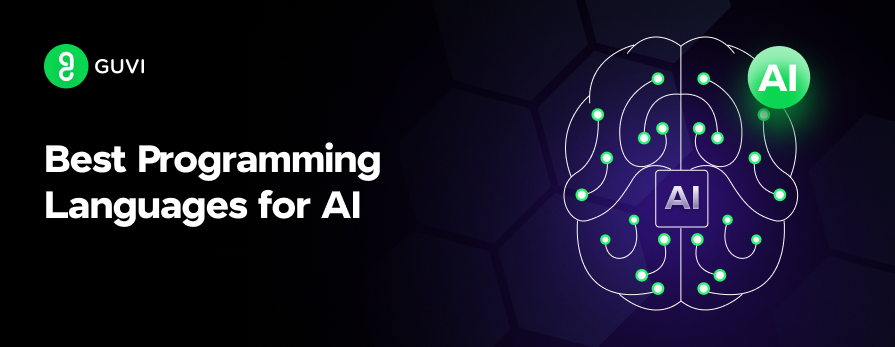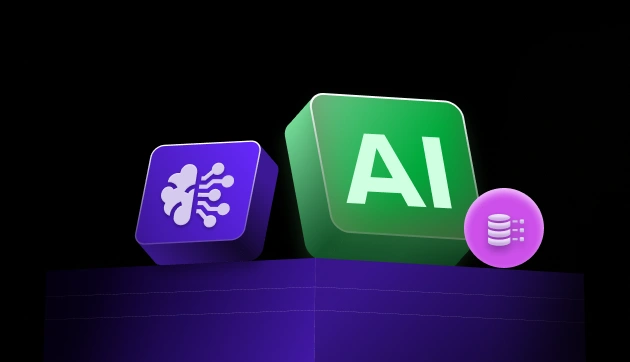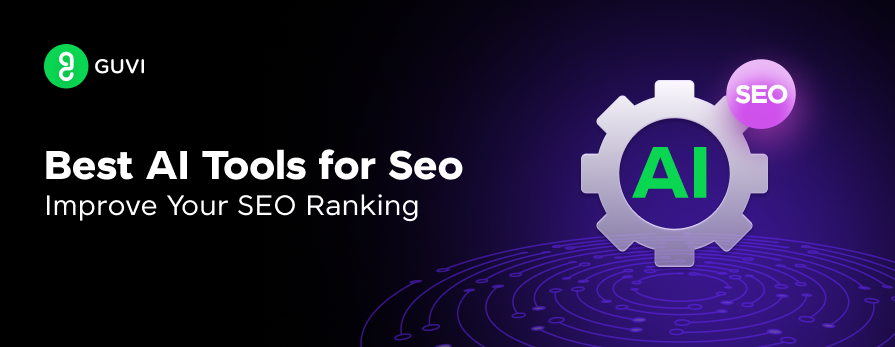
Best Programming Languages for AI: A Comprehensive Guide
Mar 13, 2025 8 Min Read 8756 Views
(Last Updated)
Artificial Intelligence (AI) has emerged as one of the most transformative technologies of the 21st century, revolutionizing industries and reshaping the way we interact with machines. As AI continues to evolve and expand its reach, the choice of programming language becomes increasingly important for developers, researchers, and organizations looking to use its power.
In this comprehensive guide, we’ll explore the best programming languages for AI development.
We’ll cover a range of languages, from the widely popular to the more specialized, examining how each contributes to various aspects of AI development, including machine learning, neural networks, natural language processing, and more. By the end of this article, you’ll have a clear understanding of which languages are best suited for different AI applications and why.
Table of contents
- What is Artificial Intelligence?
- Best Programming Languages for AI
- Python
- R
- Julia
- C++
- Java
- JavaScript
- Lisp
- Prolog
- MATLAB
- Scala
- Comparison
- Future Trends
- Conclusion
- FAQs
- What are the best programming languages for AI development?
- Why is Python considered the top choice for AI programming?
- How do I choose the right programming language for my AI project?
What is Artificial Intelligence?
Artificial Intelligence (AI) refers to the simulation of human intelligence in machines that are designed to think, learn, and perform tasks that typically require human intelligence. AI systems can process large amounts of data, recognize patterns, make decisions, and improve over time based on experience.
Key concepts of AI:
- Machine Learning: A subset of AI where systems learn from data and improve their performance without being explicitly programmed.
- Natural Language Processing (NLP): Enables machines to understand and interact using human language.
- Computer Vision: Allows machines to interpret and make decisions based on visual input, such as images or videos.
- Robotics: AI is used in robots to perform tasks autonomously.
- Deep Learning: A type of machine learning that uses neural networks with many layers to analyze complex data patterns.
AI is used in various applications, including virtual assistants, recommendation systems, autonomous vehicles, healthcare diagnostics, and more. Its goal is to create systems that can perform tasks intelligently, sometimes even better than humans.
If you want to explore GenAI in-depth and transform your ideas into reality, enroll in GUVI’s Generative AI course today!
Best Programming Languages for AI

Let’s explore the following AI programming languages:
1. Python

Python has established itself as the de facto standard for AI and machine learning, and for good reason. Its simplicity, versatility, and a robust ecosystem of libraries and frameworks make it an ideal choice for both beginners and experienced developers.
Key Features:
- Easy to learn and read
- Extensive library support (NumPy, Pandas, SciPy)
- Powerful machine learning frameworks (TensorFlow, PyTorch, Scikit-learn)
- Strong community support and documentation
Python’s syntax is clean and intuitive, allowing developers to focus on problem-solving rather than getting bogged down in complex language constructs. This accessibility has contributed significantly to its widespread adoption in the AI community.
Why Python for AI?
- Extensive Python features, libraries, and frameworks like TensorFlow, PyTorch, and Scikit-learn simplify AI and machine learning tasks.
- Python’s simplicity and readability allow for faster development and prototyping of AI models.
- Strong community support and vast resources make it easier to troubleshoot and learn AI techniques.
- Python integrates well with other languages and tools, enabling the development of complex AI systems.
- Its dynamic typing and interpreted nature allow for flexible and iterative development, crucial for AI research.
If you’re ready to learn AI and take your skills to the next level, enroll in GUVI’s ChatGPT course today!
2. R

While Python dominates the general AI, R for data science holds a special place for statisticians and data scientists. Originally designed for statistical computing and graphics, R has evolved into a powerful tool for machine learning and AI, particularly in areas that require heavy statistical analysis.
Key Features:
- Specialized in statistical computing and data analysis
- Excellent visualization capabilities
- Comprehensive machine learning packages (caret, mlr)
- Strong in predictive modeling and statistical inference
- Active community in academia and research
R’s strength lies in its statistical roots. It provides a wide range of statistical and graphical techniques, including linear and nonlinear modeling, time-series analysis, classification, and clustering. This makes it particularly well-suited for AI applications that rely heavily on statistical methods, such as predictive modeling and anomaly detection.
Why R for AI?
- Specialized in statistical analysis and data visualization, which are essential for training AI models.
- Libraries such as caret, nnet, and randomForest provide robust machine-learning tools.
- Built-in support for handling and manipulating large datasets, which is crucial for AI.
- Strong integration with data processing tools, making it ideal for data-driven AI research.
- R’s ability to create advanced statistical models aids in developing accurate AI predictions.
3. Julia

Julia is relatively new in the programming language, but it has quickly gained traction in the scientific computing and AI communities. Designed to address the “two-language problem” – where researchers prototype in a high-level language but need to rewrite in a faster language for production – Julia aims to provide both ease of use and high performance.
Key Features:
- High performance comparable to C
- Easy-to-read syntax similar to Python
- Dynamic typing with optional static typing
- Designed for distributed and parallel computing
- Growing ecosystem of AI and machine learning libraries
Julia’s most striking feature is its performance. It uses just-in-time (JIT) compilation to achieve speeds that rival, and sometimes surpass, those of C. This makes it an excellent choice for computationally intensive AI tasks, such as training large neural networks or processing big datasets.
Why Julia for AI?
- High-performance capabilities, with execution speed comparable to C and Fortran, ideal for computational-heavy AI tasks.
- Native support for parallel and distributed computing, allowing for efficient large-scale AI model training.
- Mathematical syntax similar to MATLAB, making it intuitive for implementing complex AI algorithms.
- Julia’s multiple dispatch system enhances the flexibility and efficiency of AI code.
- Strong support for GPU and TPU acceleration, which is vital for deep learning tasks.
4. C++

While high-level languages like Python dominate much of AI development, C++ remains an important player, especially in performance-critical AI applications. Its ability to provide low-level control over system resources, combined with high-performance capabilities, makes it invaluable for certain AI tasks.
Key Features:
- High performance and efficiency
- Low-level control over hardware
- Extensive use of in-game AI and robotics
- Important for optimizing AI libraries and frameworks
- Strong in embedded systems and IoT applications
C++’s primary strength in AI lies in its performance. When every millisecond counts, such as in real-time systems or when processing massive datasets, C++ can provide the speed and efficiency needed. This makes it particularly valuable in areas like high-frequency trading algorithms, autonomous vehicles, and complex simulations.
Why C++ for AI?
- High execution speed and memory efficiency make it suitable for real-time AI applications.
- Fine-grained control over system resources allows for optimized AI algorithm implementation.
- Libraries like Dlib and Shark provide powerful tools for machine learning and computer vision.
- C++’s object-oriented features support modular AI code development and reuse.
- Low-level operations and manual memory management enable the creation of highly optimized AI systems.
5. Java

Java, with its “write once, run anywhere” philosophy, has long been a staple in enterprise software development. While it may not be the first language that comes to mind for AI, Java’s robustness, scalability, and extensive ecosystem make it a strong contender, especially for large-scale AI applications in business environments.
Key Features:
- Platform independence
- Strong typing and object-oriented design
- Excellent for large-scale, enterprise-level AI systems
- Rich ecosystem of AI libraries and frameworks
- Good performance with JVM optimizations
Java’s primary strength in AI development is its scalability and reliability. For large corporations looking to integrate AI into their existing Java-based infrastructure, it provides a familiar and robust platform. Java’s strong typing and object-oriented nature also contribute to creating maintainable and scalable AI systems.
Why Java for AI?
- Robust multi-threading capabilities are essential for handling parallel processing in AI tasks.
- Platform independence (WORA) facilitates the deployment of AI applications across different systems.
- Comprehensive libraries such as Weka, Deeplearning4j, and MOA provide extensive support for AI development.
- Java’s garbage collection and memory management reduce the risk of memory leaks in large AI applications.
- Strong support for building scalable, distributed AI systems makes it suitable for enterprise-level AI solutions.
6. JavaScript

JavaScript, primarily known as the language of the web, has been making significant inroads into AI, particularly in client-side machine learning and AI-driven web applications. Its ubiquity in web browsers and growing capabilities in server-side environments make it an increasingly important player in certain AI niches.
Key Features:
- Runs in web browsers, enabling client-side AI
- Growing ecosystem of AI and machine learning libraries
- Asynchronous programming model suitable for AI tasks
- Ideal for AI-powered web applications and chatbots
- Large developer community and extensive documentation
JavaScript’s primary strength in AI lies in its ability to run machine learning models directly in web browsers. This opens up possibilities for privacy-preserving AI applications, where data processing happens on the client side without needing to send sensitive information to a server.
Why JavaScript for AI?
- Frameworks like TensorFlow.js enable AI models to run directly in the browser, enhancing accessibility.
- Asynchronous and event-driven nature of JavaScript supports real-time AI applications on the web.
- Ubiquity of JavaScript allows for the seamless integration of AI with existing web technologies.
- JavaScript’s lightweight execution in browsers reduces the overhead of deploying AI models to end-users.
- Easy integration with front-end technologies, making it ideal for creating interactive AI-powered user interfaces.
7. Lisp

Lisp, one of the oldest programming languages still in use, holds a special place in the history and ongoing development of AI. Created in 1958 by John McCarthy, one of the founding fathers of AI, Lisp has been intertwined with AI research from the very beginning.
Key Features:
- Powerful symbolic expression handling
- Dynamic typing and automatic memory management
- Macros for extending the language
- Ideal for symbolic AI and expert systems
- Historical significance in AI research
Lisp’s strength in AI primarily lies in its ability to manipulate symbolic expressions efficiently. This makes it particularly well-suited for symbolic AI, which focuses on representing problems in terms of symbols and manipulating these symbols according to specified rules.
Why Lisp for AI?
- Dynamic typing and runtime code generation are ideal for building adaptive AI systems.
- Powerful macro system allows developers to create complex AI algorithms with fewer lines of code.
- Lisp’s symbolic processing capabilities are particularly well-suited for AI tasks like natural language processing.
- Tail recursion and efficient list processing enable the handling of recursive AI algorithms effectively.
- Lisp’s support for functional programming aids in the development of clean and modular AI code.
8. Prolog

Prolog, short for “Programming in Logic,” is a logic programming language that has played a significant role in the development of AI, particularly in the areas of natural language processing, expert systems, and symbolic reasoning.
Key Features:
- Declarative programming paradigm
- Built-in inference engine
- Excellent for knowledge representation and reasoning
- Strong in pattern matching and symbolic computation
- Useful for natural language processing and expert systems
Prolog’s unique strength lies in its declarative nature. Instead of specifying a sequence of steps to solve a problem, developers define facts and rules, and Prolog’s built-in inference engine reasons these to find solutions. This approach is particularly well-suited to certain AI tasks, especially those involving logical reasoning and knowledge representation.
Why Prolog for AI?
- Prolog’s logical reasoning and pattern-matching capabilities are crucial for AI tasks involving symbolic reasoning.
- Built-in backtracking mechanism supports the development of complex rule-based AI systems.
- Declarative nature allows developers to express AI algorithms in terms of relationships and rules, simplifying logic-based AI development.
- Prolog’s unification algorithm facilitates the efficient matching of AI queries with known facts or patterns.
- Ideal for developing expert systems, knowledge bases, and natural language processing AI applications.
9. MATLAB

MATLAB (MATrix LABoratory) is a numerical computing environment and programming language developed by MathWorks. While not exclusively an AI language, MATLAB has found significant use in AI and machine learning applications, particularly in academic and research settings.
Key Features:
- Powerful matrix operations and linear algebra support
- Extensive toolboxes for various AI and ML tasks
- Excellent for rapid prototyping and algorithm development
- Strong visualization capabilities
- Widely used in signal processing and control systems
MATLAB’s strength in AI lies in its powerful mathematical capabilities, particularly in matrix operations and linear algebra. These are fundamental to many AI and machine learning algorithms, making MATLAB well-suited for tasks like data preprocessing, feature extraction, and model implementation.
Why MATLAB for AI?
- Specialized toolboxes for neural networks, computer vision, and deep learning provide out-of-the-box AI solutions.
- Matrix-based language structure is ideal for implementing AI algorithms that involve heavy mathematical computations.
- Advanced data visualization capabilities help in analyzing and interpreting AI model outputs.
- MATLAB’s rapid prototyping environment enables quick iteration and testing of AI models.
- Extensive support for hardware acceleration (e.g., GPUs) speeds up AI model training and execution.
10. Scala

Scala, a language that runs on the Java Virtual Machine (JVM), has been gaining traction in the AI community, particularly for large-scale data processing and machine learning applications.
Key Features:
- Combines object-oriented and functional programming paradigms
- Excellent for big data processing with Apache Spark
- Strong static typing with type inference
- Concise syntax compared to Java
- Good performance due to JVM optimization
Scala’s primary strength in AI lies in its ability to handle large-scale data processing efficiently. It’s the language in which Apache Spark, a popular framework for big data processing and machine learning, is implemented. This makes Scala an excellent choice for AI applications that need to process and analyze massive datasets.
Why Scala for AI?
- Combines object-oriented and functional programming paradigms, enhancing flexibility in AI algorithm development.
- Seamless integration with Java libraries and frameworks, leveraging a vast ecosystem for AI development.
- Built-in support for parallel processing and concurrency is crucial for handling large-scale AI data processing tasks.
- Strong compatibility with Apache Spark, making it ideal for big data AI applications.
- Scala’s type-safe environment reduces runtime errors in AI applications, leading to more reliable systems.
Comparison
When choosing a programming language for AI development, it’s important to consider the specific requirements of your project. Here’s a brief comparison of the languages we’ve discussed, along with some typical use cases:
| Programming Language | Best Applications | Typical Use Cases |
| Python | General-purpose AI development, machine learning, deep learning | Rapid prototyping, NLP, computer vision, reinforcement learning, data science, and analytics |
| R | Statistical analysis, data visualization, machine learning | Complex simulations, large-scale data processing, scientific research, robotics, financial modeling, optimization problems |
| Julia | Numerical and scientific computing, high-performance tasks | Complex simulations, large-scale data processing, scientific research, robotics, financial modelling, optimization problems |
| C++ | Performance-critical applications, low-level AI algorithm implementation | Game AI development, autonomous systems, embedded systems, simulation systems, computer vision, and real-time processing |
| Java | Enterprise-level AI applications, integrating AI into existing systems | Enterprise AI solutions, web-based AI applications, big data processing, cloud-based AI services, robotics, and cross-platform AI solutions |
| JavaScript | Client-side machine learning, AI-powered web applications | Interactive AI functionalities in web browsers, client-side data processing, real-time AI applications, voice recognition, and synthesis |
| Lisp | Symbolic AI, expert systems, understanding foundational AI concepts | Symbolic reasoning, expert systems, natural language processing, AI research and prototyping, genetic programming |
| Prolog | Logic programming, rule-based systems, knowledge representation | Expert systems, knowledge representation, natural language understanding, automated theorem proving, constraint logic programming |
| MATLAB | Signal processing, image processing, control systems | Neural network design, AI-driven signal interpretation, control algorithm development, data analysis, image/video processing, and AI algorithm prototyping |
| Scala | Big data processing, large-scale machine learning | Real-time data processing, distributed AI systems, scalable machine learning applications using Apache Spark, and functional AI programming |
This table provides a snapshot of the best uses for each language in AI development, helping you make an informed decision based on the specific needs and goals of your project. By aligning the strengths of a programming language with the demands of your AI application, you can optimize performance, enhance efficiency, and ensure the success of your AI initiatives.
Future Trends
As AI continues to evolve, we can expect to see changes in the programming language landscape:
- Increased focus on performance: As AI models grow larger and more complex, languages and frameworks that can efficiently utilize hardware (like GPUs and TPUs) will become increasingly important.
- Rise of domain-specific languages: We may see more languages specifically designed for AI tasks, optimized for particular types of computations or AI paradigms.
- Greater emphasis on interpretability: As AI systems become more prevalent in critical applications, languages and tools that facilitate explainable AI will gain importance.
- Integration of AI capabilities: More general-purpose languages may incorporate AI-specific features and libraries as standard components.
- Quantum computing considerations: As quantum computing advances, we may see new languages or extensions to existing languages designed to program quantum AI algorithms.
If you’re ready to learn AI and ML, the Artificial Intelligence and Machine Learning Courses by GUVI is your perfect gateway. Gain hands-on experience, learn from industry experts, and get endless opportunities in one of the most exciting fields today. Enroll now and start your journey toward becoming an AI and ML expert!
Conclusion
The choice of programming language for AI development depends on various factors, including the specific AI domain, performance requirements, ecosystem support, and developer expertise. While Python currently dominates the field, each language we’ve discussed has its strengths and ideal use cases.
For beginners in AI, Python remains the recommended starting point due to its ease of use and extensive resources. For those working on specialized AI applications or looking to optimize performance, languages like C++, Java, or Julia might be more appropriate.
Ultimately, the best language for your AI project will depend on your specific needs and constraints. Many successful AI systems use a combination of languages, using the strengths of each. As the field of AI continues to evolve, staying adaptable and being willing to learn new languages and tools will be key to success in AI development.
FAQs
Here are the best programming languages for AI development with their primary purposes:
1. Python (General-purpose AI, machine learning)
2. R (Statistical analysis, data visualization)
3. Java (Enterprise-level AI applications)
4. C++ (Performance-critical AI tasks)
5. Julia (High-performance computing in AI)
Python is considered the top choice for AI programming due to:
1. Simplicity and Readability: Easy syntax makes it accessible for beginners and efficient for experienced developers.
2. Extensive Library Support: Includes powerful AI and machine learning libraries like TensorFlow, PyTorch, and scikit-learn.
3. Large Community: A vast, active community provides extensive resources, tutorials, and support.
4. Versatility: Applicable across multiple domains, including data analysis, machine learning, and deep learning.
5. Rapid Prototyping: Facilitates quick development and testing of AI models, speeding up the overall process.
To choose the right language:
1. Identify Project Type: Machine learning, deep learning, etc.
2. Consider Options: Python: Best for general AI projects.
3. R: Great for statistical analysis.
4. C++: Ideal for high-performance needs.
5. Java: Good for large-scale applications.
6. Check Libraries and Support: Look for available tools and community help.
7. Prototype and Test: Evaluate performance with prototypes.
8. Factor in Maintenance: Choose based on your team’s expertise and future needs.

























Did you enjoy this article?